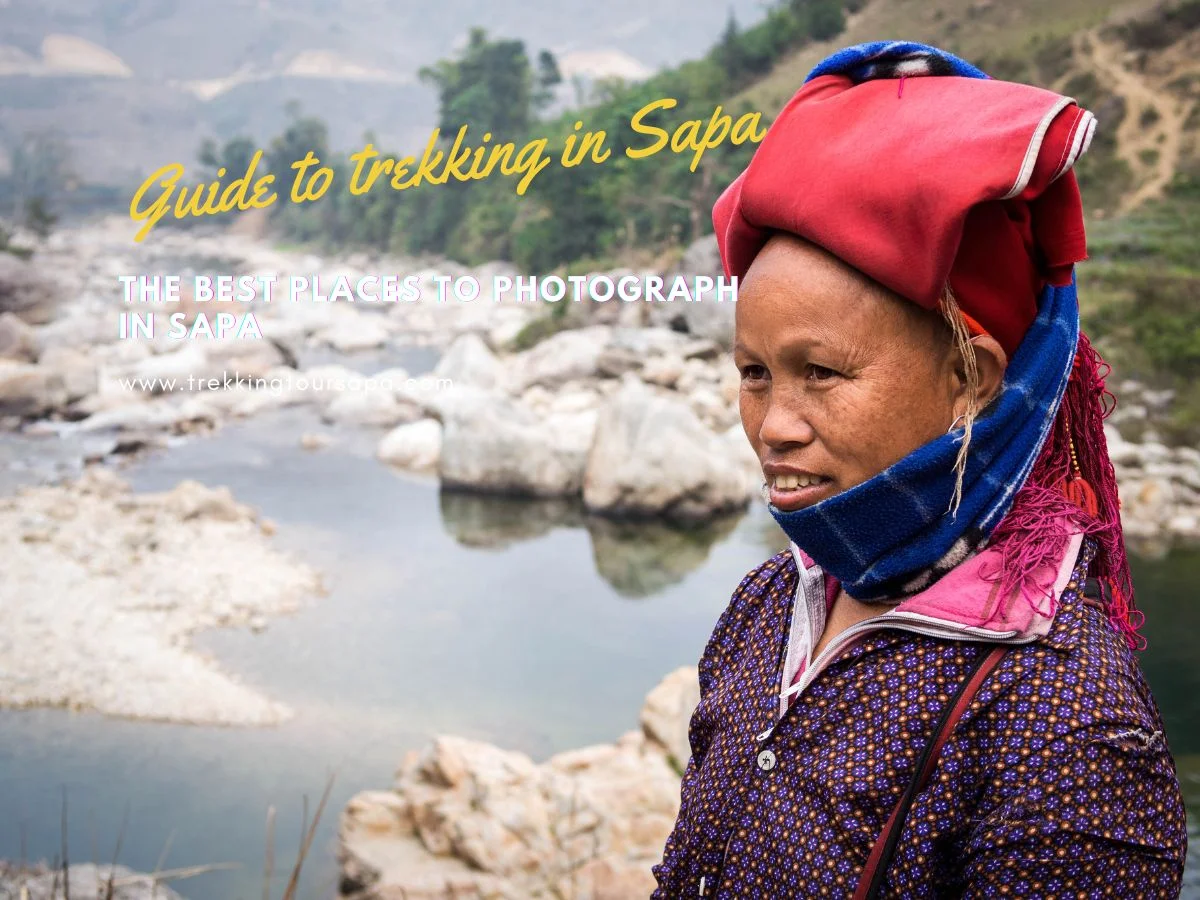Are you a photography enthusiast seeking breathtaking scenery and cultural experiences? Look no further than Sapa, Vietnam. This mountainous region in the northwest of Vietnam is known for its lush green rice terraces, picturesque villages, and vibrant markets.
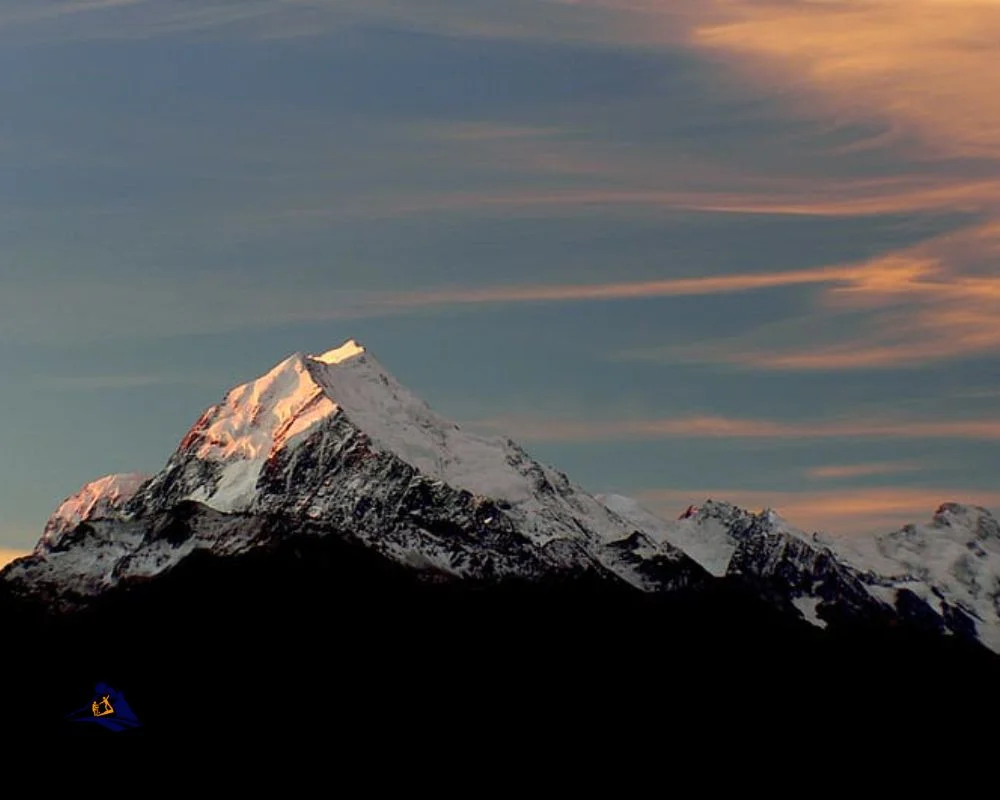
From the towering Fansipan Mountain to the bustling Bac Ha Sunday Market, there are countless opportunities to capture unforgettable moments. Embark on a journey through Mu Cang Chai Rice Terraces, visit Cat Cat Village to learn about Hmong culture or hike up Ham Rong Mountain for panoramic views of Sapa Town. With so many incredible locations to choose from, your creativity will be unleashed as you explore this stunning corner of Southeast Asia.
Table of Contents
ToggleMu Cang Chai Rice Terraces
If you’re into breathtaking landscapes, you can’t miss the Mu Cang Chai rice terraces. This UNESCO World Heritage site is a photographer’s dream come true with its vibrant green hues and intricate patterns. The best time to visit is from September to early October when the rice fields are at their peak of beauty, creating a stunning visual feast for any camera lens.

Rice terrace photography isn’t the only attraction here; visitors also have the opportunity to interact with the local community and learn about their way of life. You can witness traditional methods of farming and even participate in harvesting rice if you’re lucky enough to be there during the harvest season. All in all, this place offers an incredible cultural exchange that will leave you feeling enriched and inspired. Now let’s move on to our next destination: Fansipan Mountain!
Fansipan Mountain
The awe-inspiring Fansipan Mountain is a must-see destination for anyone looking to capture the breathtaking beauty of Sapa. This highest peak in Indochina offers a variety of hiking trails that will take you through lush forests, cascading waterfalls, and stunning vistas. If you’re not up for the trekking adventure, you can still get an unforgettable view by taking a cable car ride to the top.
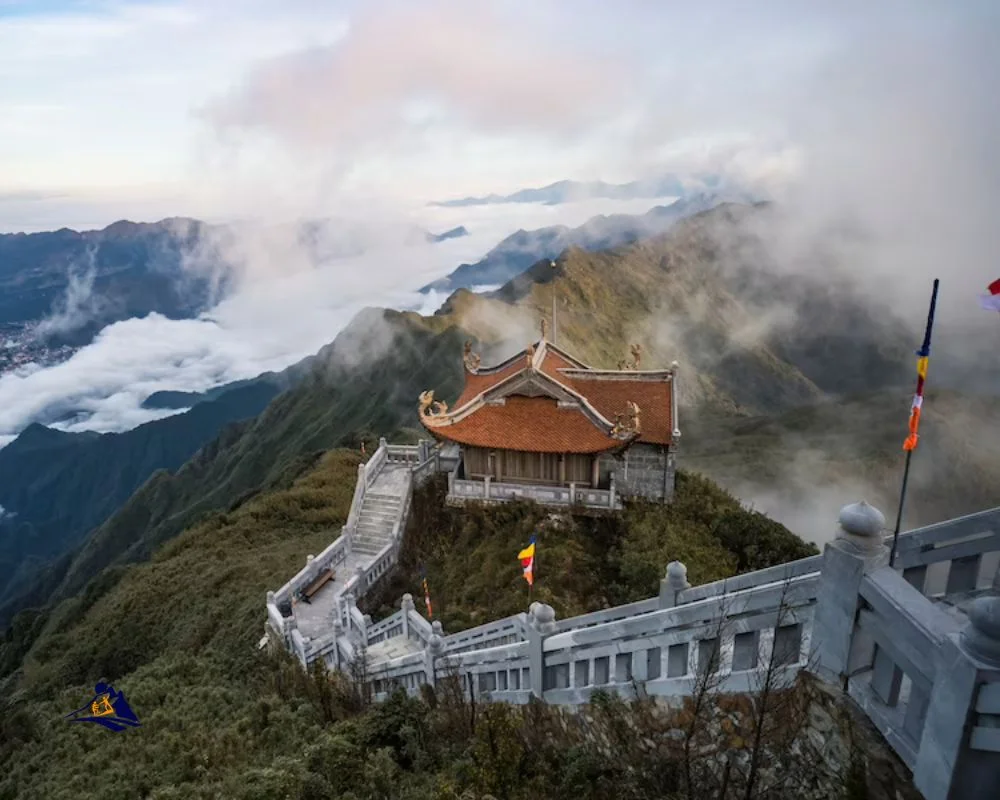
As you ascend on the cable car, be prepared to witness some of the most stunning panoramas in Vietnam. The 15-minute ride takes you over verdant rice paddies, dense forest cover and past glistening streams. Once at the summit station, soak in panoramic views of Vietnam’s northwest region which includes Sapa town itself. After exploring this magnificent mountain range head down towards Cat Cat village where more natural wonders await!
Cat Cat Village
When visiting Cat Cat Village, you’ll have the opportunity to immerse yourself in traditional H’mong culture and admire their unique clothing. The vibrant colors and intricate designs make for stunning portrait photography opportunities. However, it’s important to be respectful of the local community by asking for permission before taking photos and avoiding intrusive behavior.
Traditional H’mong culture and clothing
Exploring the winding, narrow streets of Sapa‘s villages reveals a colorful world of traditional H’mong culture and clothing. The H’mong people are known for their intricate embroidery work, which can be seen on their clothing and household items such as pillowcases and table runners. The vibrant colors of their traditional clothes are a feast for the eyes, with bold stripes and geometric patterns that reflect the natural environment around them.
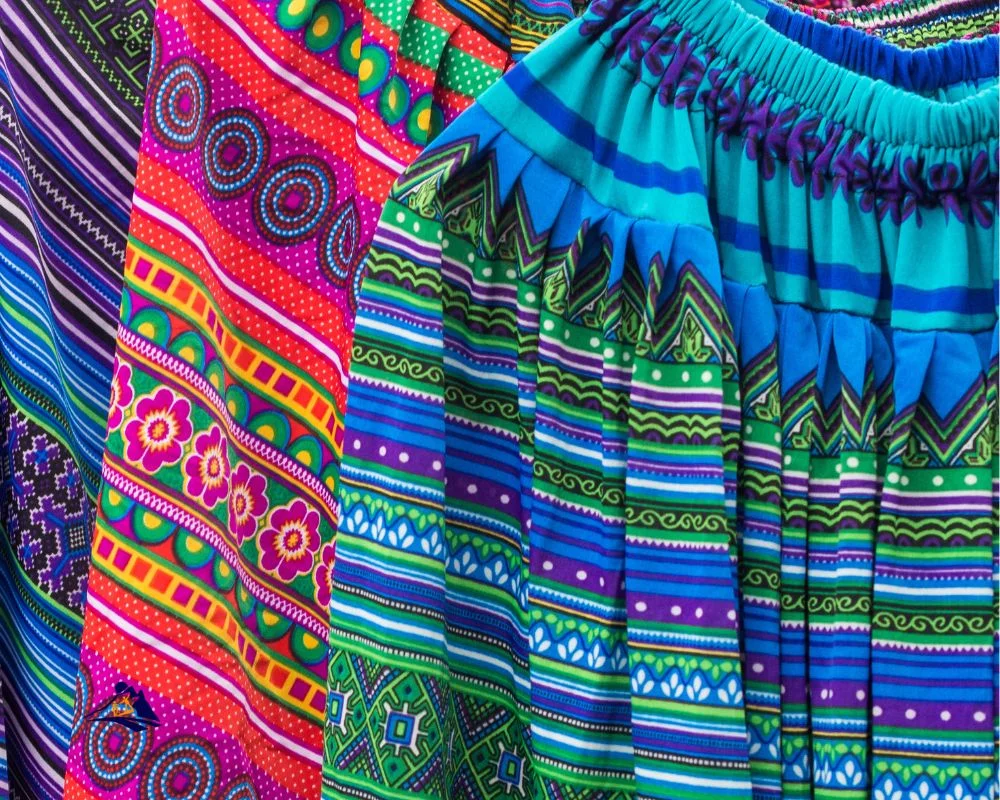
In addition to their distinctive clothing, the H’mong people have a rich cultural heritage that includes traditional festivals such as the Tet holiday in January or February. During these celebrations, locals gather together to sing and dance in elaborate costumes that showcase their unique style. For visitors interested in learning more about this fascinating culture, there are opportunities to take part in homestays and cultural tours that provide an immersive experience into daily life in Sapa‘s villages.
As you immerse yourself in Sapa‘s H’mong culture, you’ll find endless opportunities for portrait photography. From capturing the intricate details of their embroidered clothing to documenting festive gatherings with friends and family members, every moment offers a chance to capture something truly special. As you explore this vibrant community, keep your camera at the ready so you don’t miss any of these memorable moments!
Opportunities for portrait photography
You’ll have endless chances to capture stunning portraits as you immerse yourself in the vibrant H’mong culture of Sapa, from documenting the intricate embroidery work on their clothing to capturing festive gatherings with friends and family. To create striking portraits, try incorporating some posing techniques such as having your subjects stand at angles or use props like baskets or traditional instruments. When it comes to lighting, natural light can be your best friend for creating a soft and flattering effect. Photographing during sunrise or sunset will provide beautiful warm tones and long shadows.
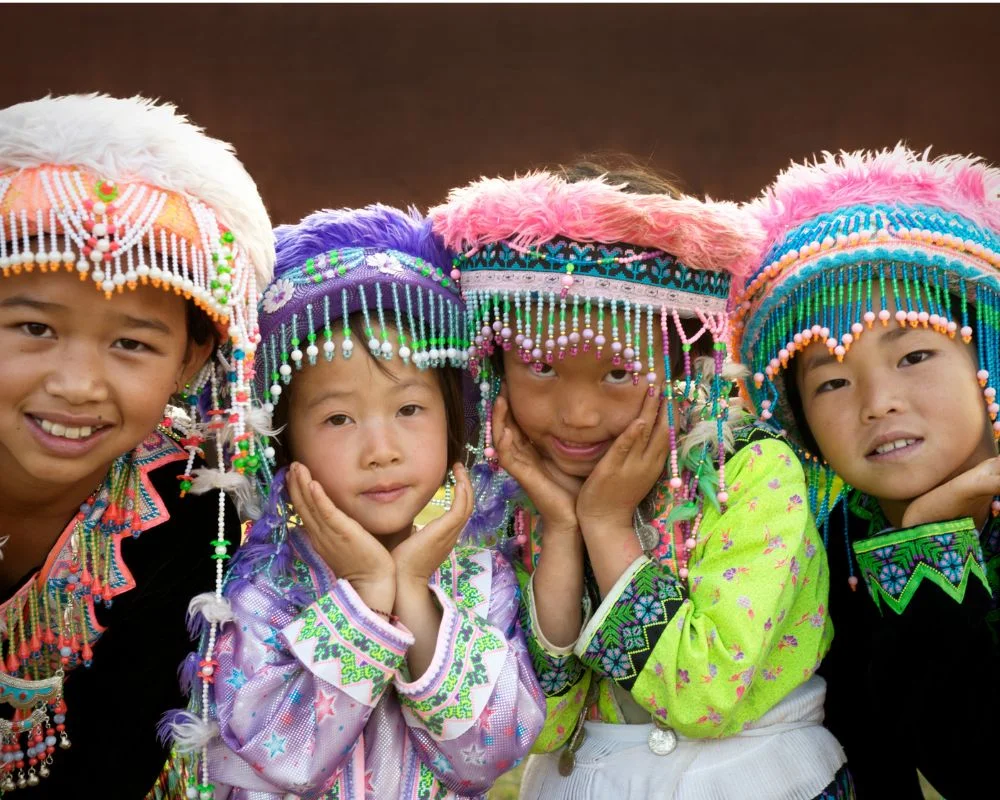
Another tip for portrait photography is to get up close and personal with your subject. The H’mong people have unique facial features that make for captivating close-up shots. Don’t be afraid to ask permission before taking someone’s photo and offer to show them the image afterwards as a sign of respect. By building trust with locals, you’ll not only gain access to more intimate moments but also learn more about their customs and way of life in Sapa.
Tips for respectfully photographing the local community
To capture the essence of the local community in your photographs, it’s important to show respect and build trust with the H’mong people by asking for permission and offering to share the images. Ethical photography requires cultural sensitivity and an understanding of the values and beliefs of the community you’re photographing. Keep in mind that not everyone is comfortable being photographed, so always ask before taking a picture.
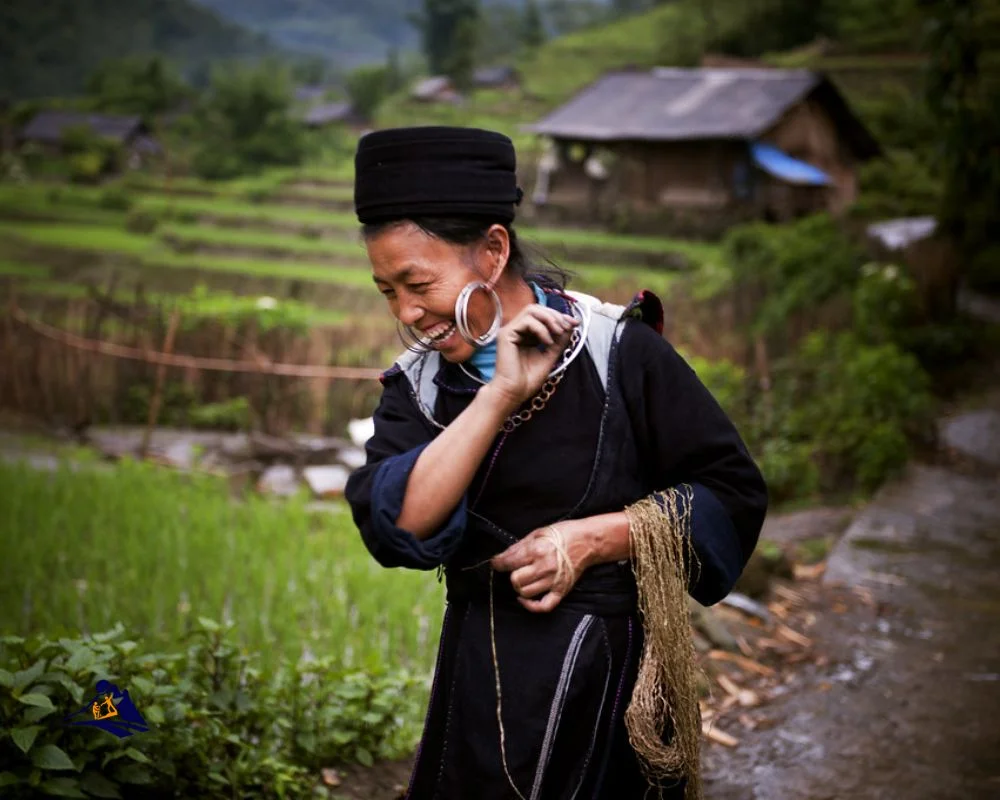
When photographing locals, try to blend in as much as possible by dressing modestly and avoiding flashy or expensive clothing or accessories. Remember that you are a guest in their home, so be respectful of their customs and traditions. Here is a table with some tips on how to respectfully photograph the local community in Sapa:
| Respectful Photography Tips | Explanation | Example |
|---|---|---|
| Ask for Permission | Always ask before taking someone’s photo, especially if they are engaged in a private activity such as praying or cooking. | “Excuse me, can I take your picture?” |
| Share Your Images | Offer to show people their photos on your camera screen or print out copies for them to keep. This helps build trust and fosters positive relationships between photographers and subjects. | “Would you like to see your photo?” |
| Be Mindful of Cultural Norms | Respect local customs by dressing appropriately (covering shoulders/knees), removing shoes when entering homes/temples, and avoiding offensive gestures/language. | “I’ll remove my shoes before entering your home.” |
Respectful photography not only benefits the local community but also enhances the quality of your images by capturing authentic moments without causing harm or offense. With these tips in mind, you’ll be able to create beautiful portraits that showcase both the beauty of Sapa’s landscape and its vibrant culture. Speaking of landscapes, let’s move onto our next topic: Silver Waterfall!
Silver Waterfall
If you’re looking for a stunning natural attraction, Silver Waterfall is a must-see when visiting Sapa. Located about 30 minutes from the town center, this cascading waterfall drops from 200 meters high and creates a misty spray that adds to its beauty. As you approach the waterfall, you’ll be greeted by lush greenery and the sound of rushing water.

Silver Waterfall offers many great opportunities for photography, especially during the rainy season from May to September when it’s at its fullest. If you want to capture the entire waterfall in one shot, bring a wide-angle lens or use panorama mode on your camera. For more detailed shots, try using a telephoto lens or getting closer to the base of the waterfall. The best time to visit is early in the morning when there are fewer tourists and better lighting for photos. After visiting Silver Waterfall, head over to Bac Ha Sunday Market for an unforgettable cultural experience.
Bac Ha Sunday Market
Bac Ha Sunday Market is a vibrant and colorful market that offers plenty of opportunities for capturing stunning photographs. The market stalls are overflowing with a variety of unique products, from traditional textiles to fresh produce, creating a feast for the eyes. To capture the essence of the local community and its culture, portrait photography is an excellent option at this bustling market. However, navigating the crowds can be challenging, so it’s essential to plan your shots in advance and be patient when waiting for the perfect moment to capture the atmosphere.
Colorful market stalls and products
You can’t help but feel a sense of wonder as you walk through the vibrant and bustling market stalls, with their colorful array of products on display in Sapa. From handwoven textiles to fresh produce and exotic spices, there’s something for everyone at this lively marketplace. As a photographer, you’ll find endless opportunities to capture stunning images that showcase the unique culture of this fascinating region.
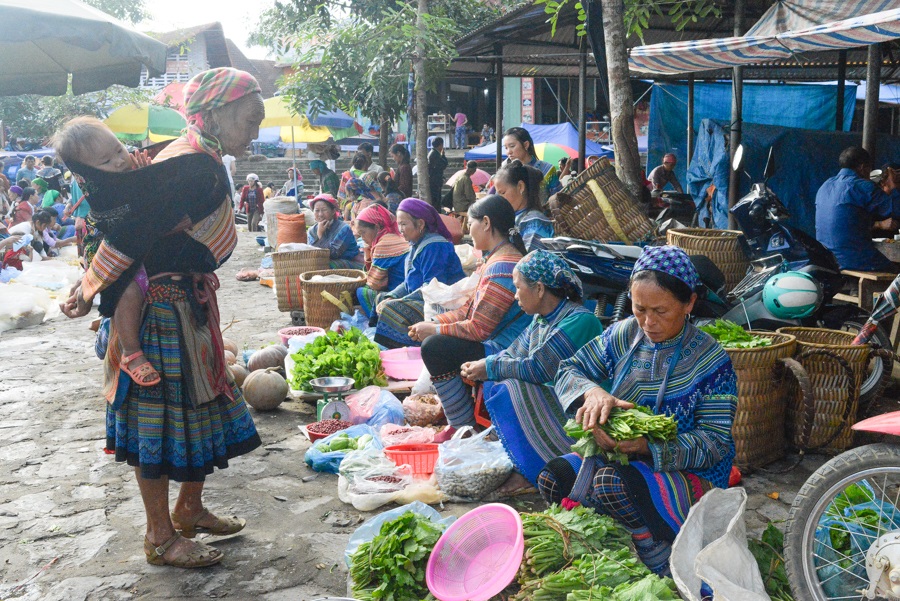
To make the most of your market photography techniques, it’s important to look beyond the obvious shots and try to capture the essence of local culture through your lens. Focus on capturing candid moments that reveal the daily lives and traditions of the people who call Sapa home. Look for interesting patterns and textures in the products on sale, or experiment with different angles and lighting to create dynamic compositions that tell a story. With some creativity and patience, you’re sure to come away from this colorful market with a collection of beautiful photographs that truly capture the spirit of Sapa. And speaking of capturing spirits…
Portrait photography of the local community
Get ready to snap some incredible shots of the friendly locals and their unique way of life as we delve into portrait photography in Sapa. One of the best places to capture these moments is at the colorful market stalls, where you can find vendors donning traditional clothing and selling their products. Don’t hesitate to strike up a conversation with them – they are often more than willing to let you take their picture and share insights about their cultural practices.
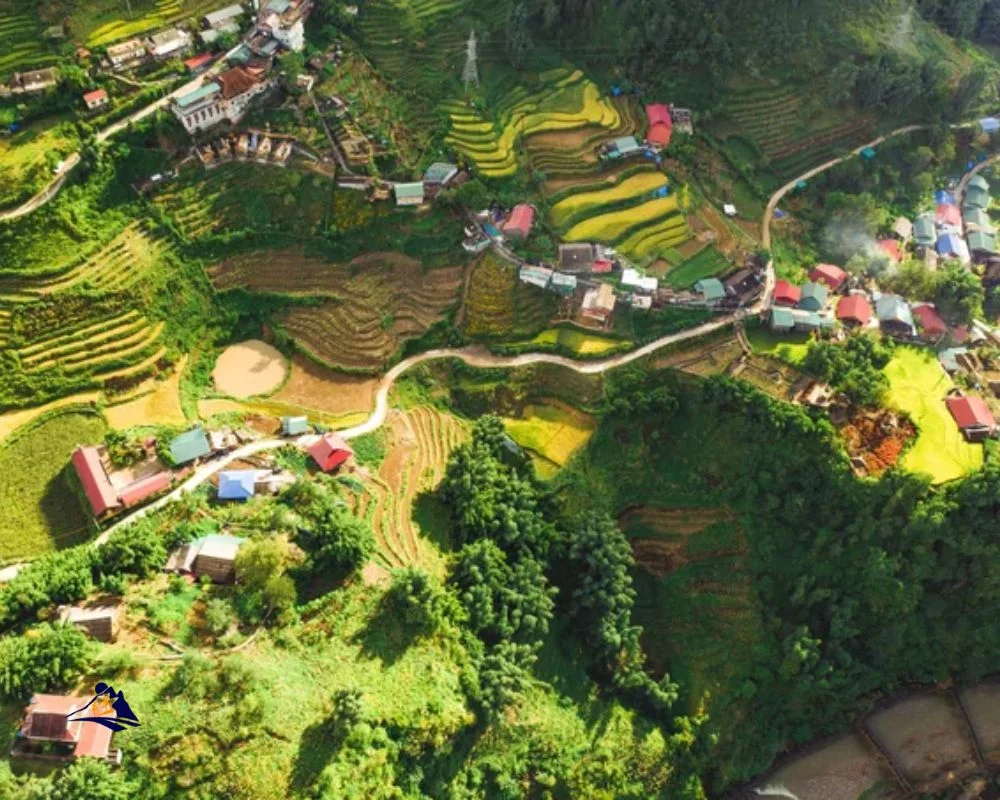
Another great spot for portraits is in the local villages surrounding Sapa. You’ll have a chance to witness daily life as it unfolds, from children playing outside to women working in rice fields. The Hmong people, who make up a significant portion of the population in this area, are especially open to being photographed and will often pose for you without hesitation. Make sure your camera is ready!
Tips for navigating the crowded market and capturing the atmosphere
Don’t be deterred by the bustling crowds at the market – with some patience and creativity, you can capture the lively atmosphere in your portraits. The Sapa market is a hub of activity, where locals come to sell their wares and tourists come to experience the vibrant culture. As you navigate through the crowds, keep an eye out for interesting subjects – perhaps a vendor selling colorful textiles, or a group of children playing traditional games.
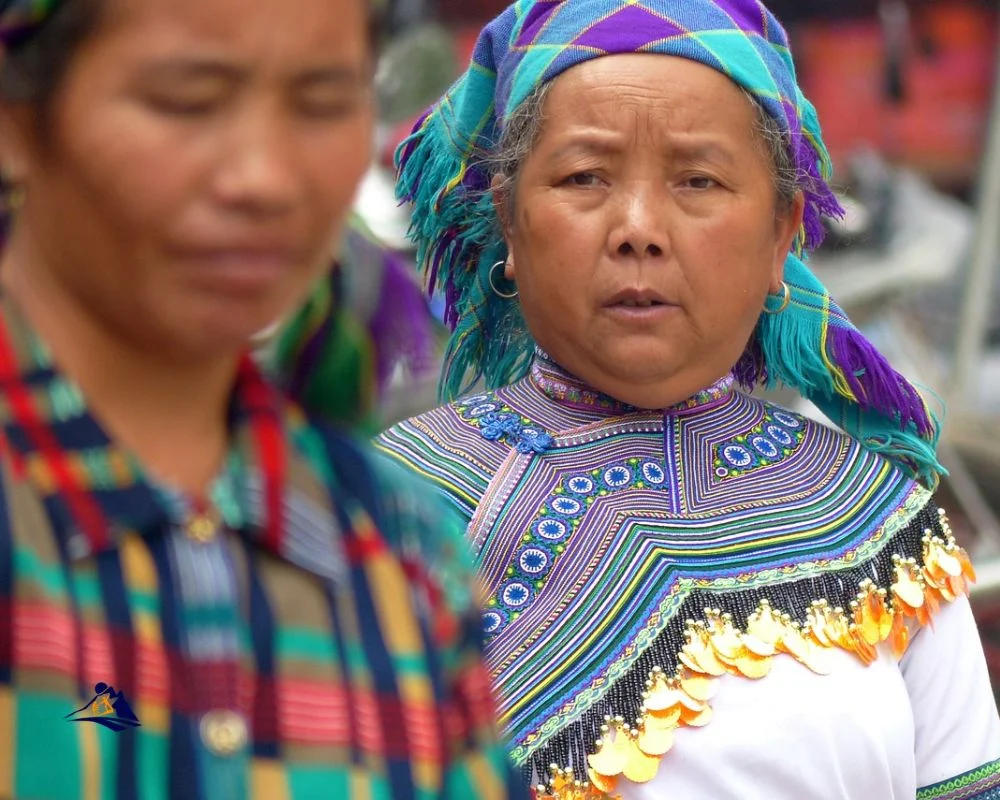
To capture the ambiance of the market, try using natural light to illuminate your subjects. The sun filters through the stalls and creates interesting shadows and highlights on people’s faces. You can also experiment with different angles and compositions – get low to the ground for a unique perspective or focus on details like hands holding produce. Remember to be respectful of people’s privacy if they don’t want their photo taken and always ask permission before snapping away. With these tips in mind, you’ll be sure to capture some unforgettable moments in Sapa’s bustling market.
As much as there is to see at Sapa’s market, sometimes it’s nice to escape from the hustle and bustle of town. In Ta Van village, just a short drive away from Sapa, you’ll find stunning rice paddies and peaceful countryside scenery that make for beautiful landscape photography.
Ta Van Village
Ta Van Village’s stunning landscapes and unique cultural traditions make it a must-visit destination for any traveler exploring the breathtaking region of northern Vietnam. As you wander through the village’s picturesque rice terraces, you’ll feel as though you’ve been transported back in time to a simpler way of life. To fully immerse yourself in the culture, consider booking a homestay experience with one of the local families. Not only will this give you an authentic glimpse into daily life in Ta Van, but it also provides an opportunity to connect with your hosts and gain insight into their customs and traditions.
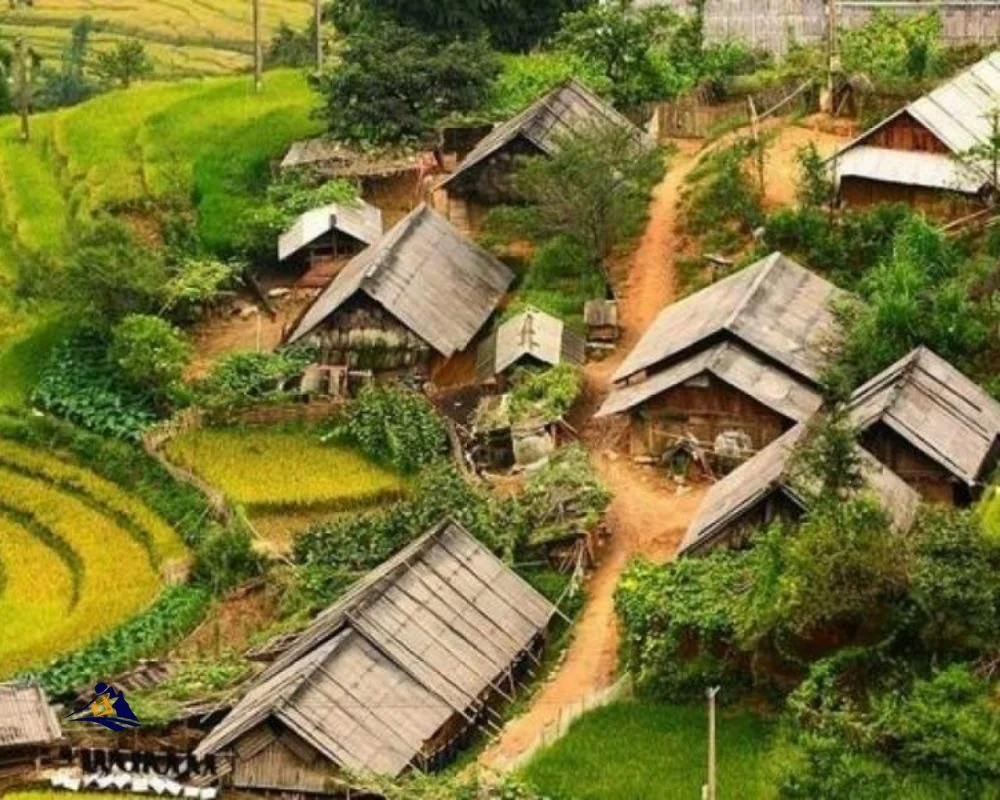
As you explore the village, take note of the intricate details that make Ta Van so special. From colorful traditional dress to ornate stilt houses constructed entirely from bamboo and timber, every aspect of daily life here is steeped in history and tradition. For nature lovers, there are plenty of opportunities for hiking and trekking through the surrounding hillsides – be sure to bring your camera along for stunning shots of rolling green hills dotted with tiny villages. After experiencing the wonders of Ta Van Village, continue on your journey by heading towards Ham Rong Mountain for even more breathtaking views.
Ham Rong Mountain
Ham Rong Mountain offers stunning views of Sapa town and the surrounding landscape, making it one of the best places to capture panoramic shots. The mountain also boasts beautiful flower gardens and nature photography opportunities that are perfect for capturing the beauty of the region. To get the best photos, be sure to follow these tips for capturing the perfect panoramas and vistas: use a wide-angle lens, shoot during golden hour, and experiment with different angles and compositions.
Views of Sapa town and surrounding landscape
You’ll love capturing stunning shots of Sapa’s charming town and breathtaking surrounding scenery. From the vantage point of Ham Rong Mountain, you can take in panoramic views of the town nestled between rolling hills and terraced rice paddies. But that’s not the only spot to capture these incredible vistas. Here are some other places to consider:
- Fansipan Peak: The highest mountain in Indochina offers a unique perspective on Sapa and its surroundings.
- Muong Hoa Valley: This lush valley is home to terraced rice fields, waterfalls, and traditional Hmong villages.
- Silver Waterfall: Located just 12 kilometers from Sapa town, this majestic waterfall is best photographed during the rainy season when it is at its most powerful.
- Tram Ton Pass: As the highest mountain pass in Vietnam, Tram Ton offers sweeping views of both Sapa and Lai Chau provinces.
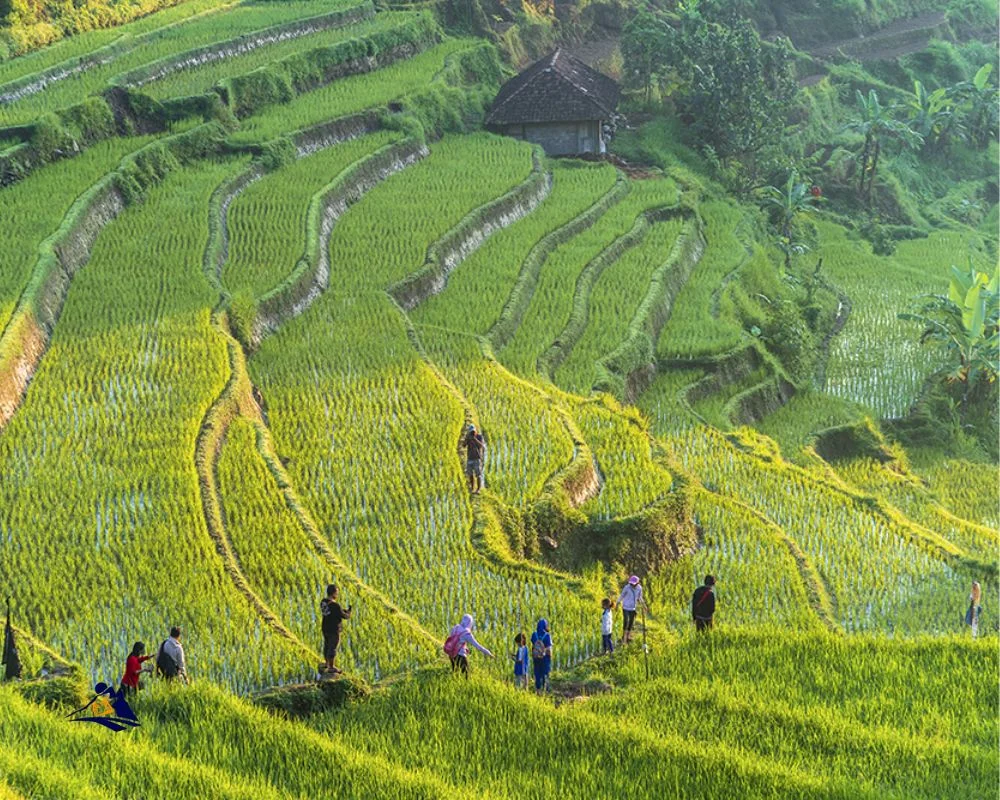
If you’re into night photography or drone photography, be sure to check out these spots as well. At night, Sapa town comes alive with twinkling lights that make for a magical scene. And with a drone, you can capture aerial shots of the entire region that will leave you breathless. Now let’s explore some nature photography opportunities in Sapa’s flower gardens!
Flower gardens and nature photography opportunities
Don’t miss out on the chance to capture stunning shots of Sapa’s flower gardens and natural scenery. Garden photography enthusiasts will be delighted by the colorful blooms in Sapa’s various parks and gardens, such as the Ham Rong Mountain Flower Garden. This garden boasts a vast array of flowers, from daisies to roses, making it an ideal spot for nature portraits. The best time to visit this attraction is in spring when the flowers are in full bloom.
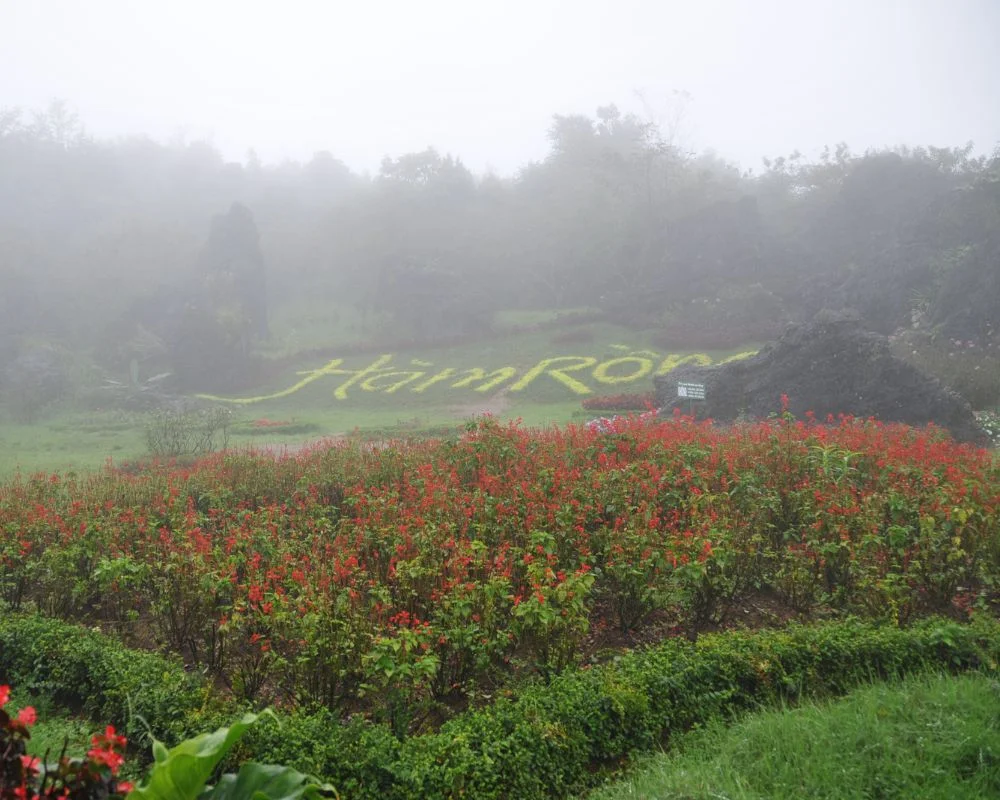
Aside from flower gardens, there are plenty of opportunities for nature photography in Sapa. The Hoang Lien Son mountain range is home to Fansipan Peak, which offers panoramic views of the surrounding landscape. You can also take a trek through the rice paddies and valleys to capture pictures of local farmers at work or animals grazing on grasslands. Don’t forget to pack your camera gear and prepare yourself for a memorable experience capturing some of Vietnam’s most beautiful landscapes!
| Tips for Capturing Panoramas | Tips for Capturing Vistas | Equipment Needed |
|---|---|---|
| Use a tripod or stable surface | Consider lighting conditions | Wide-angle lens |
| Take multiple shots and stitch them together | Look for leading lines and foreground elements | ND filter (optional) |
| Adjust aperture settings accordingly | Experiment with different angles and perspectives | Remote shutter release (optional) |
| Shoot during golden hours (sunrise/sunset) | Check weather forecasts beforehand | Extra batteries/memory cards |
With these tips in mind, you’ll be able to take breathtaking photos that showcase Sapa’s natural beauty. In the next section, we’ll discuss how you can make the most out of photographing Sapa’s panoramas and vistas without missing any details.
Tips for capturing the best panoramas and vistas
If you want to truly capture the essence of Sapa’s natural beauty, there are a few tips and techniques you should keep in mind when taking photos of the stunning panoramas and vistas that surround you. Firstly, it’s essential to find the perfect viewpoint. Sapa is famous for its rolling hills and terraced rice paddies, so finding an elevated spot that offers an unobstructed view of these landscapes is crucial.

To get that perfect shot, use a wide-angle lens to capture as much detail as possible. Also, consider using a polarizing filter to reduce glare and enhance color saturation. When taking panoramic photos, make sure your camera is level and use overlapping shots that can be stitched together later during post-processing. By following these tips and techniques, you’ll be able to take breathtaking photographs that perfectly capture Sapa’s natural beauty.
When you’re done capturing stunning vistas and panoramas in Sapa, head down into town where you’ll find plenty more photo opportunities.
Sapa Town
The town of Sapa offers a multitude of opportunities for capturing stunning images. As you explore the town, one of the best places to photograph is at the local market where you can capture vibrant colors and bustling scenes. You’ll find an array of fresh produce, local crafts, and traditional clothing being sold by the ethnic minority groups in the area. The market is especially lively on weekend mornings when locals from surrounding villages come to sell their goods.
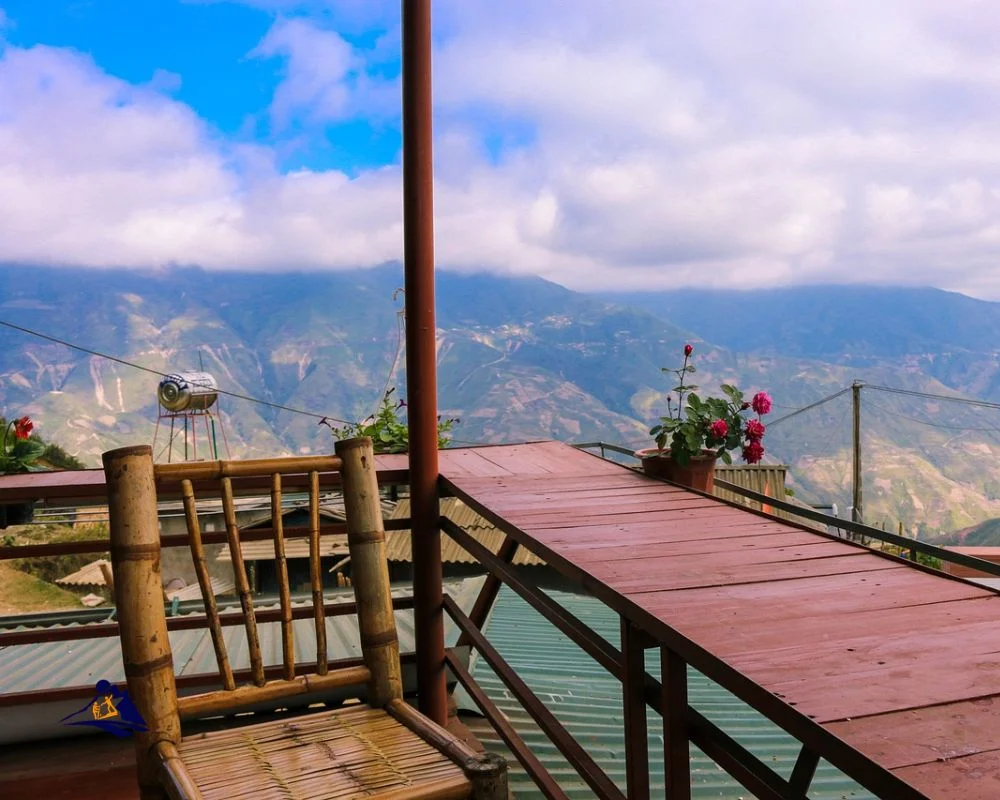
In addition to photography opportunities, Sapa town also has plenty of options for food and accommodation. For those looking to experience local cuisine, there are several restaurants that serve authentic Vietnamese dishes as well as local specialties like Thang Co (a soup made with horse meat) and grilled salmon from nearby streams. Accommodation options range from budget-friendly hostels to luxurious hotels with mountain views. Whether you’re exploring the town or using it as a base for trekking adventures in the surrounding countryside, Sapa town is definitely worth a visit for any photography enthusiast.
The Best Places To Photograph In Sapa Frequently Asked Questions
What is the best time of day to photograph the Mu Cang Chai Rice Terraces?
To capture the most stunning Golden hour shots of the breathtaking Mu Cang Chai rice terraces, you must plan your visit during the early morning hours or late afternoon. These magical moments offer a golden glow that illuminates every crevice and contour of the terraces, creating a mesmerizing spectacle worthy of any photographer’s lens. Don’t forget to bring your tripod to capture reflections in nearby water sources for an added touch of beauty and depth. As you bask in this serene landscape, you’ll feel an unexplainable sense of freedom that comes from being surrounded by such natural beauty.
Are there any restrictions on photography at Fansipan Mountain?
When it comes to photography at Fansipan Mountain, there are certain restrictions you should be aware of. The mountain is considered a sacred site for the Hmong people, so it’s important to respect their traditions and culture. Photography is allowed on the mountain, but there are guidelines that must be followed. For instance, visitors are not allowed to take pictures of the altars or any religious ceremonies taking place. Additionally, drones are not permitted in the area due to safety concerns and potential disruption of wildlife. While Fansipan Mountain is one of the top Sapa attractions for photography enthusiasts, it’s essential to abide by these rules to ensure everyone can enjoy its beauty without causing offense or danger.
Can visitors take guided tours of Cat Cat Village?
If you’re looking for an authentic cultural experience in Sapa, a guided tour of Cat Cat village is a must-do. You’ll have the opportunity to learn about the traditional customs and way of life of the local Hmong people while immersing yourself in their stunning natural surroundings. Your knowledgeable guide will lead you through the village’s narrow paths, past waterfalls and rice terraces, and introduce you to artisans who make intricate handicrafts. Along the way, take advantage of photo opportunities that showcase the unique beauty of this region. Don’t miss out on this chance to connect with a different way of life and create lasting memories.
How long does it take to hike to the Silver Waterfall?
Are you craving adventure and the rush of exploring new places? Then hiking to the Silver Waterfall in Sapa is just what you need! The scenic route offers breathtaking views of lush greenery, cascading waterfalls, and majestic mountains that will leave you in awe. As for the duration of the hike, it typically takes around 2-3 hours depending on your pace and fitness level. But don’t worry, every step is worth it once you reach the majestic Silver Waterfall. So put on your hiking boots, grab some snacks and water, and get ready to embark on a journey filled with natural beauty and freedom.
Is photography allowed inside the Bac Ha Sunday Market?
If you’re planning a trip to the Bac Ha Sunday Market, it’s important to be aware of the photography restrictions and cultural sensitivity surrounding the market. While photography is generally allowed in public areas, it’s important to ask for permission before taking photos of individuals or their wares. Additionally, it’s important to be respectful of local customs and avoid taking photos that could be considered invasive or disrespectful. By being mindful of these restrictions and showing cultural sensitivity during your visit, you can capture beautiful images while also respecting the traditions and people of this unique market.
Conclusion
Congratulations! You now know the best places to capture stunning photographs in Sapa. Whether you’re mesmerized by rice terraces, fascinated by local culture, or seeking breathtaking mountain views, there’s something for everyone in this beautiful region of Vietnam.
From the Mu Cang Chai Rice Terraces and Fansipan Mountain to Cat Cat Village and Silver Waterfall, you can explore a variety of landscapes that will leave you speechless. Don’t forget to visit Bac Ha Sunday Market and Ta Van Village, where you can experience the vibrant colors and sounds of daily life in Sapa. And if you want panoramic views of the town below, Ham Rong Mountain is definitely worth a climb.
So grab your camera and head out to these amazing destinations in Sapa. Who knows? Your next great shot could be just around the corner.
